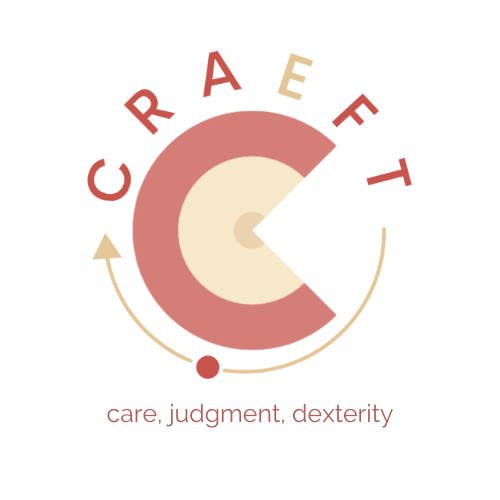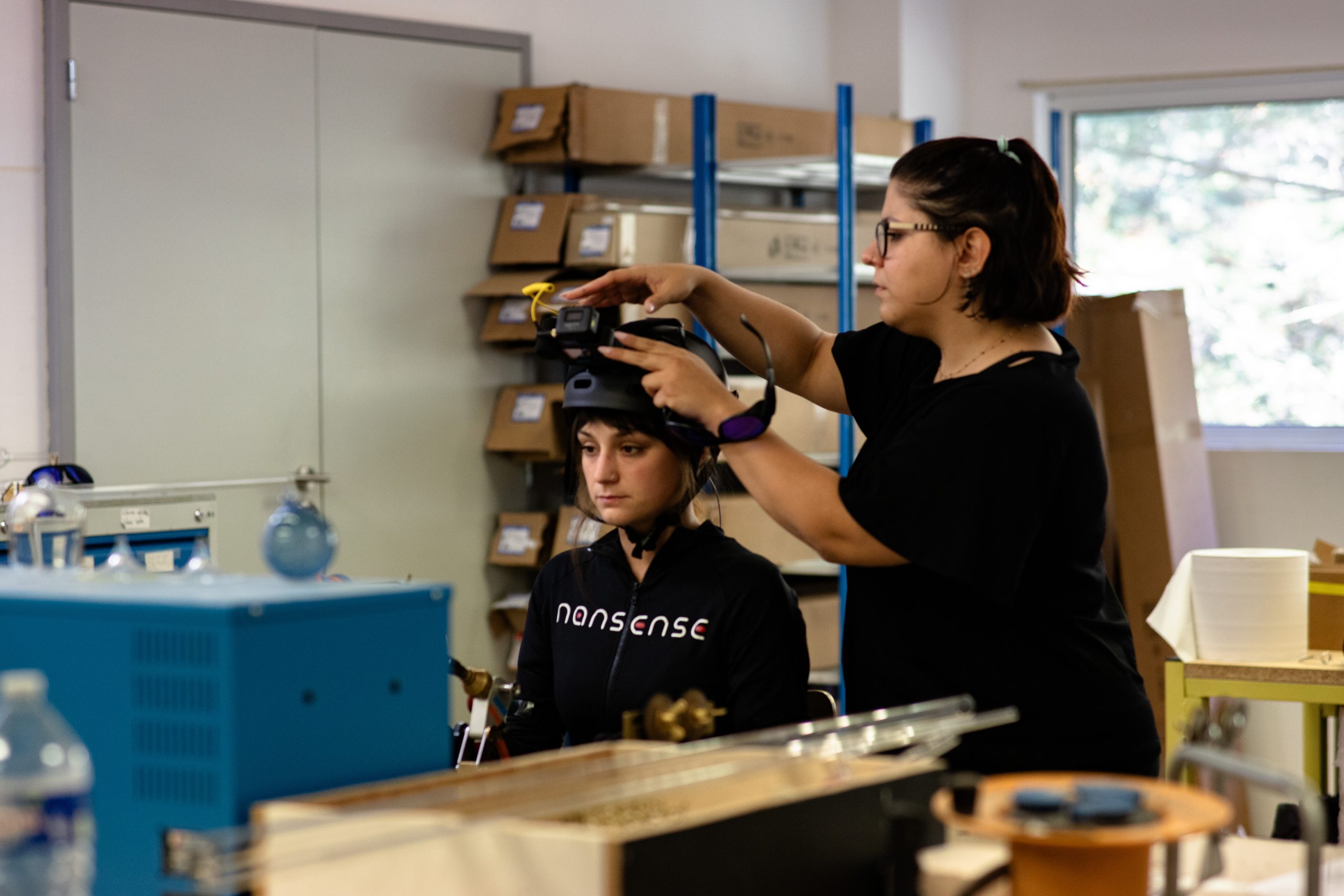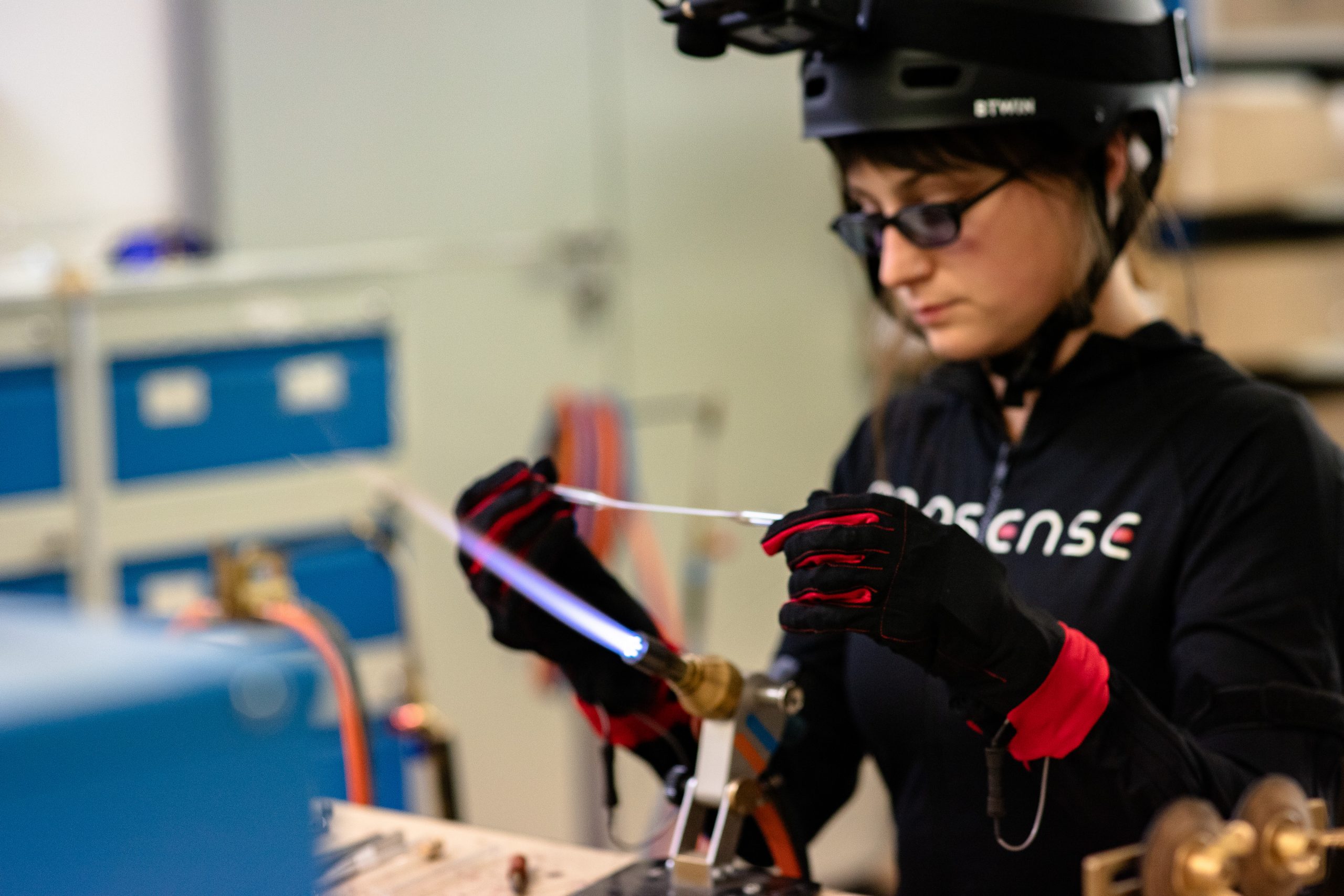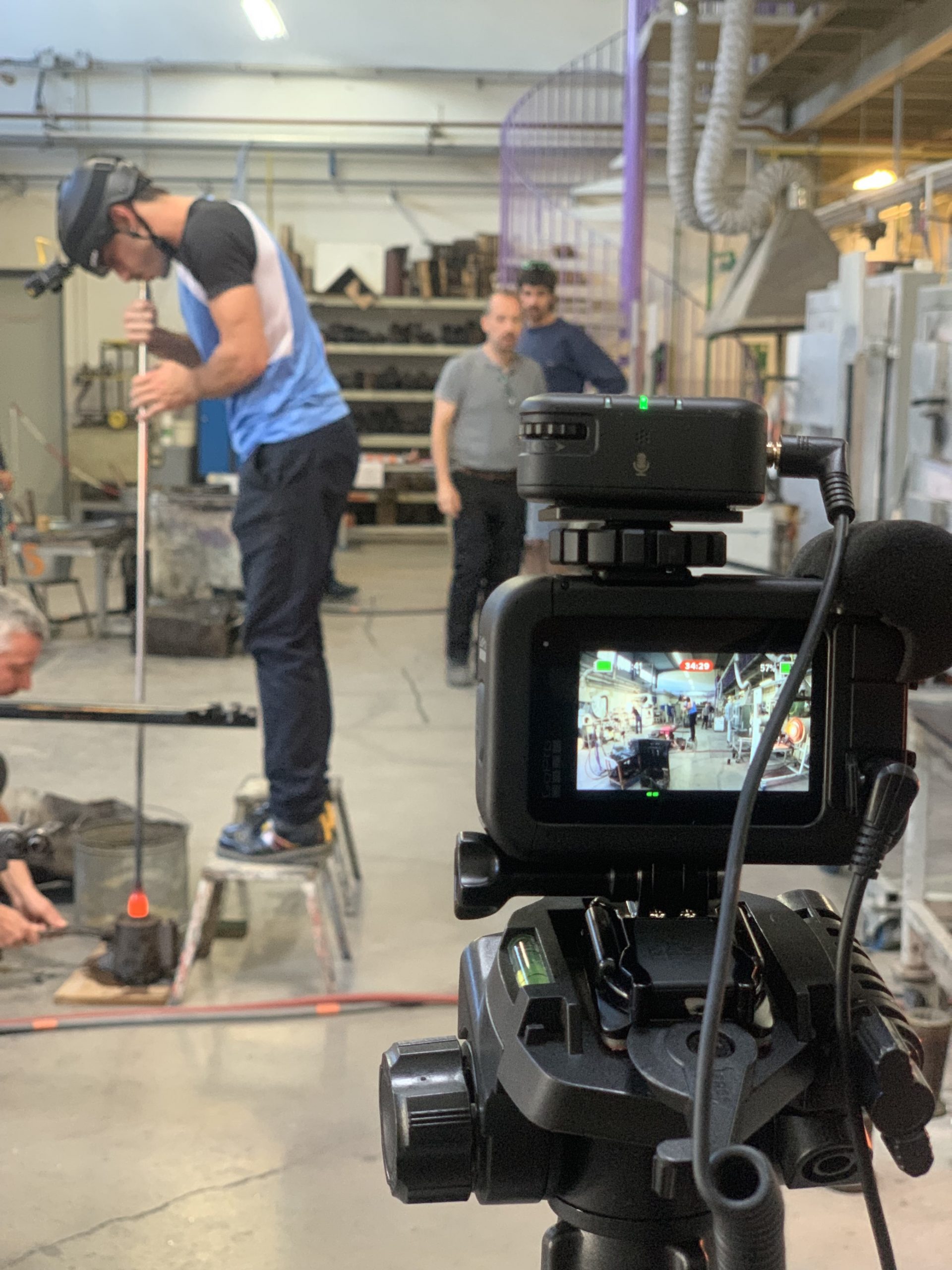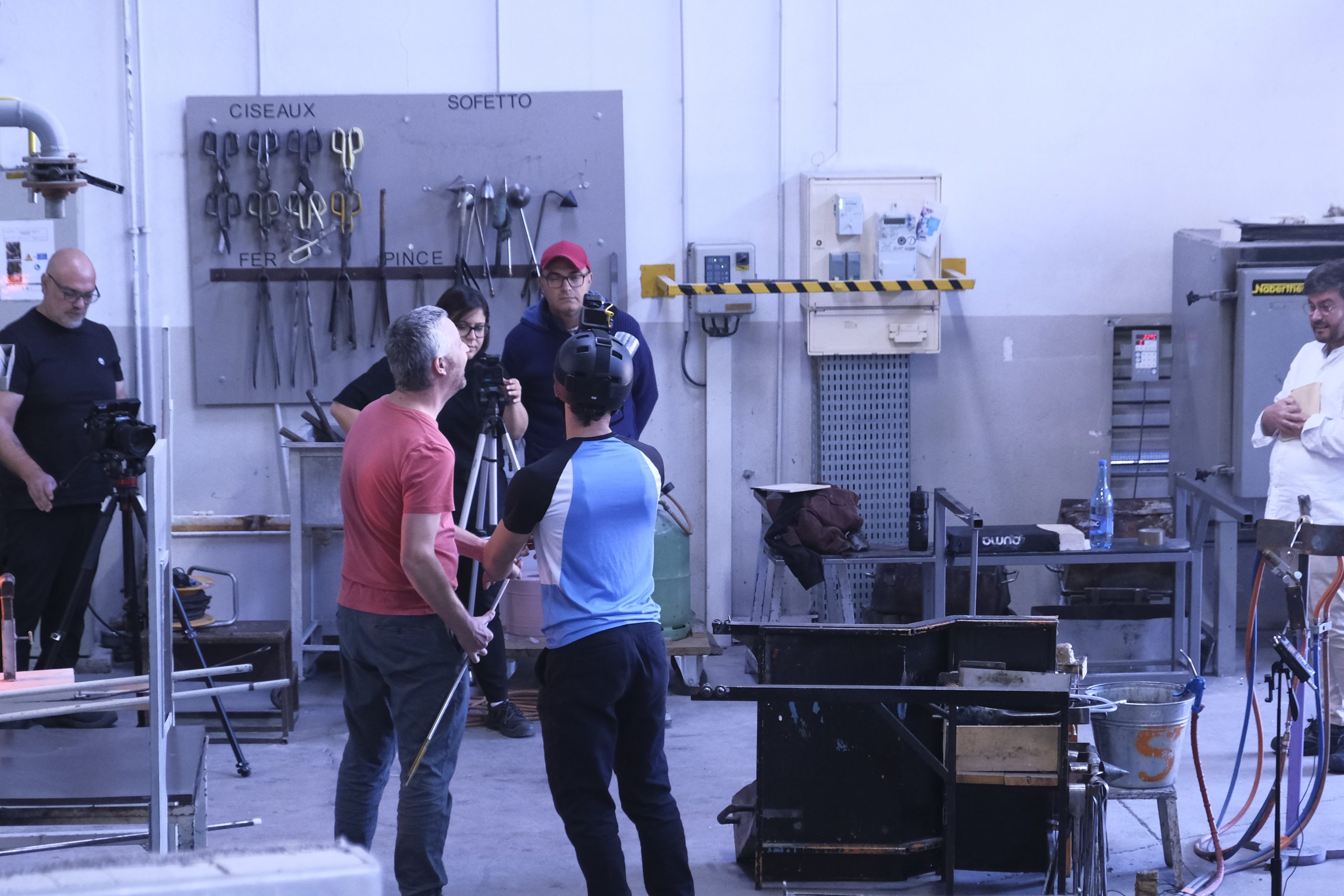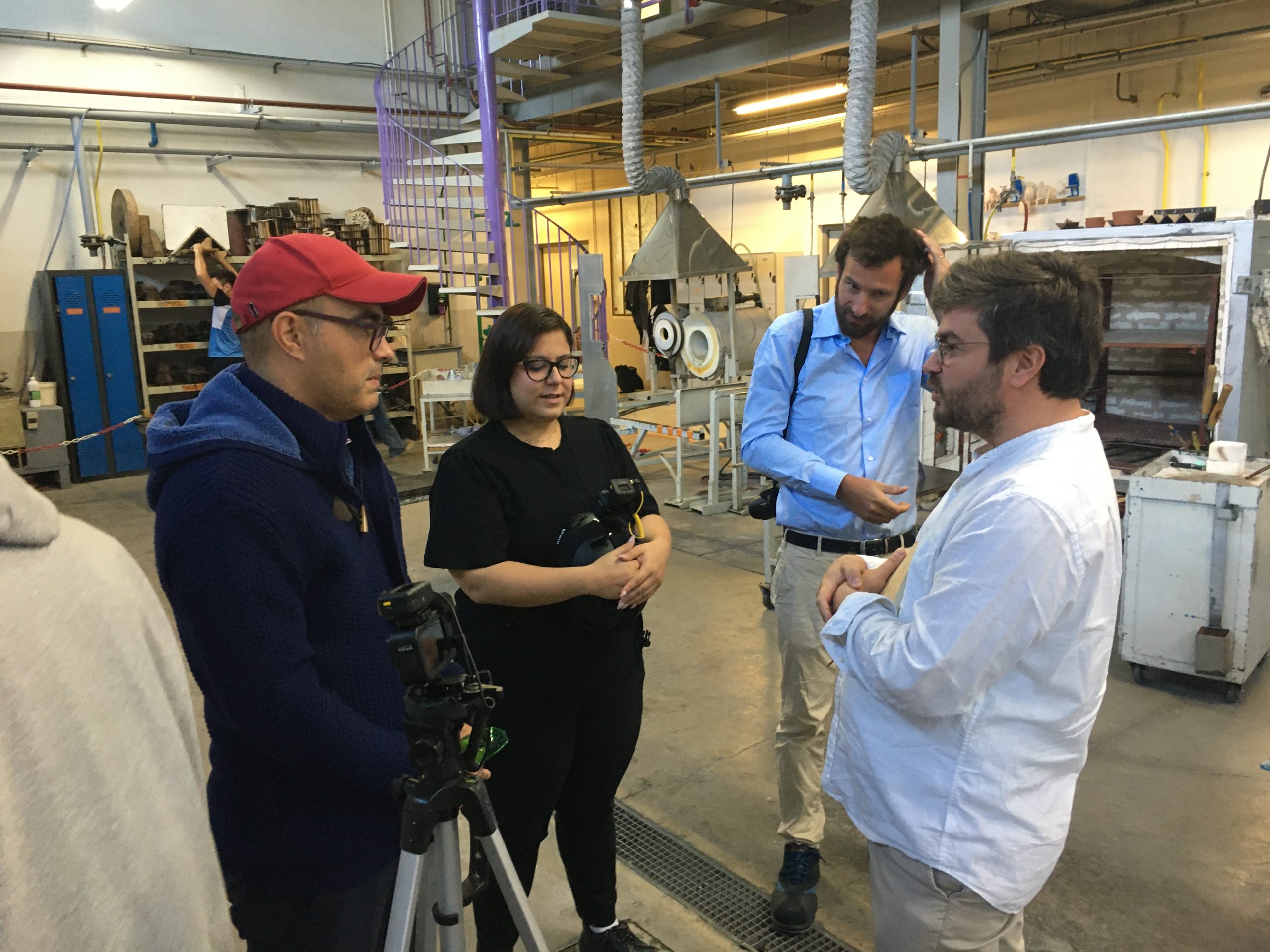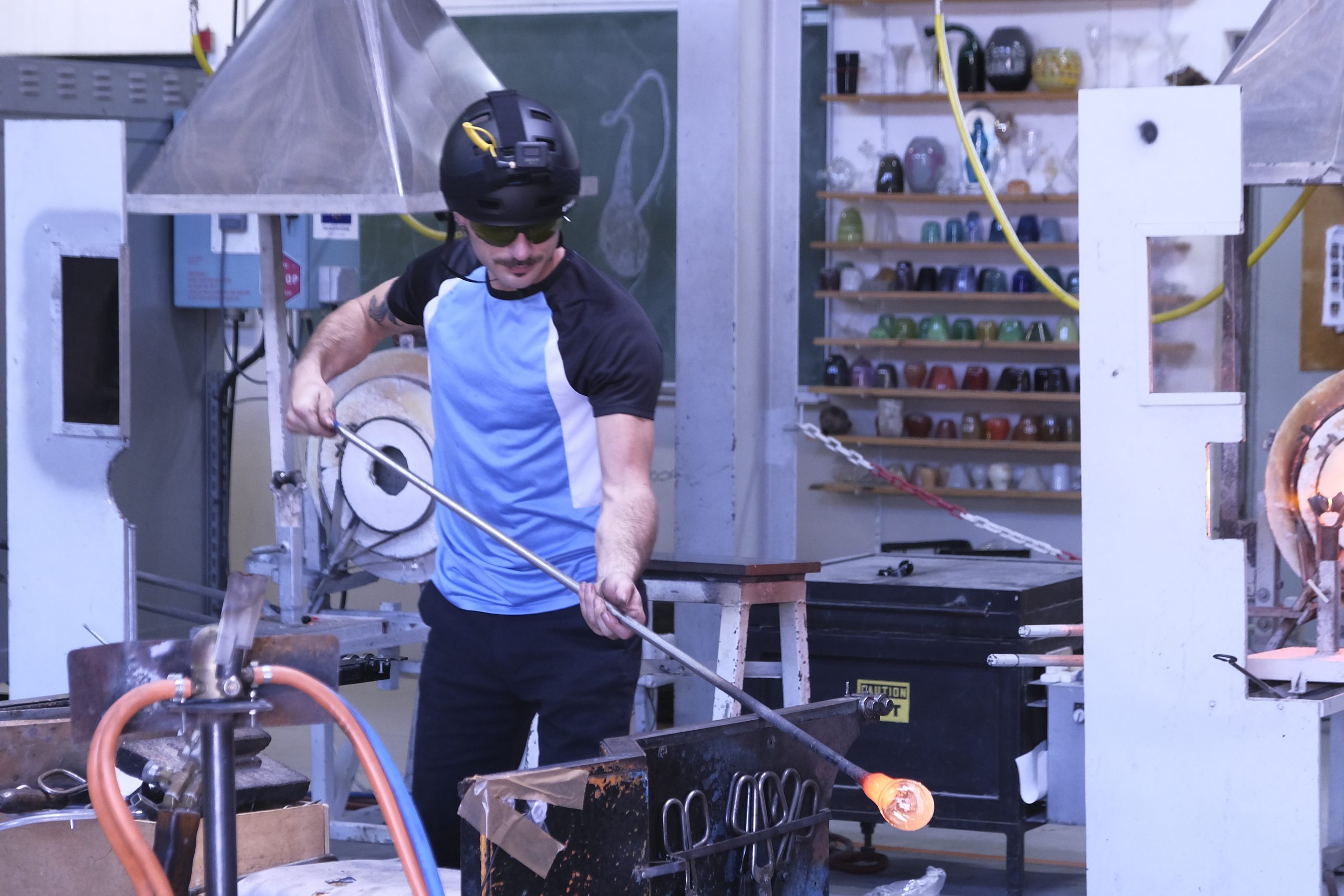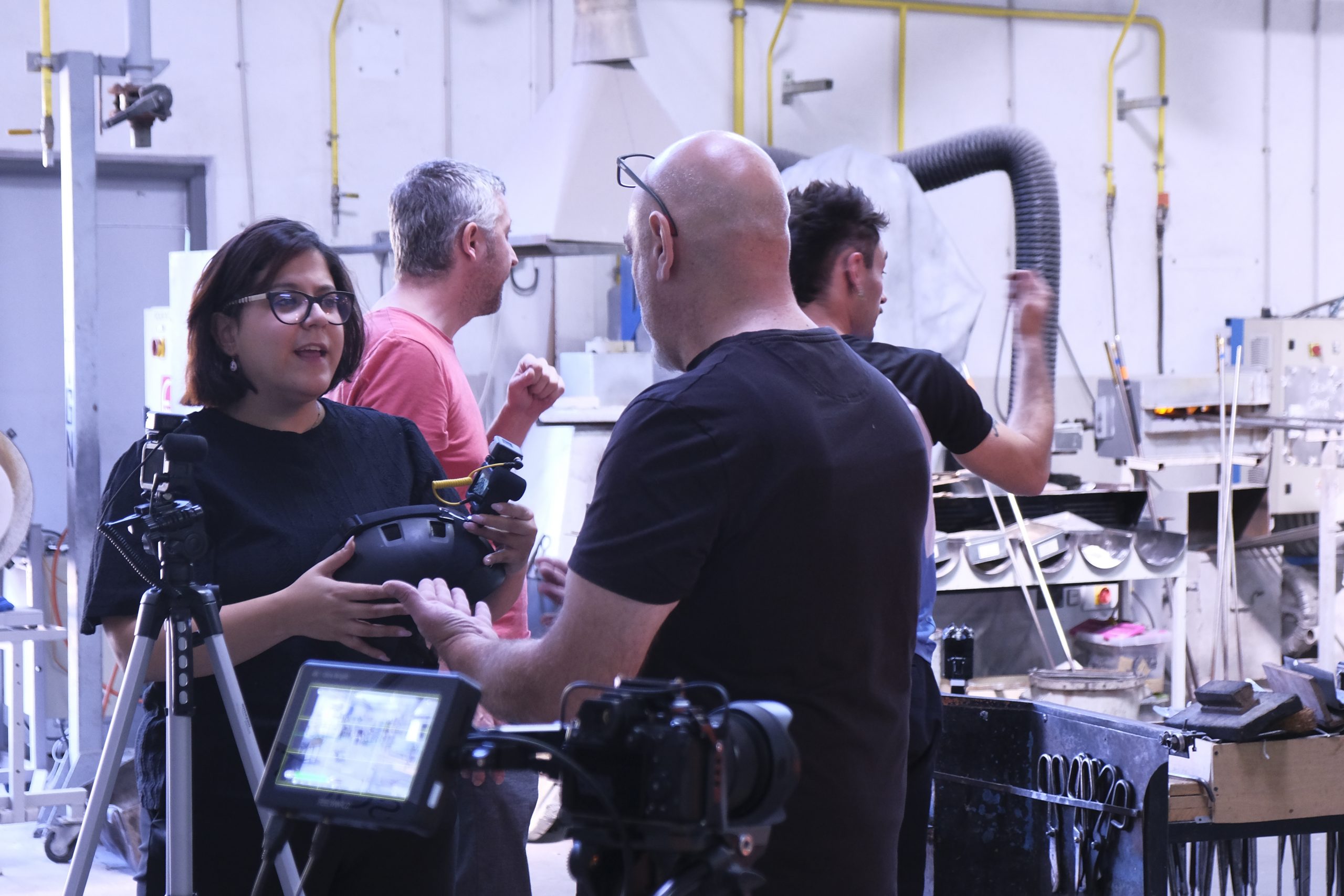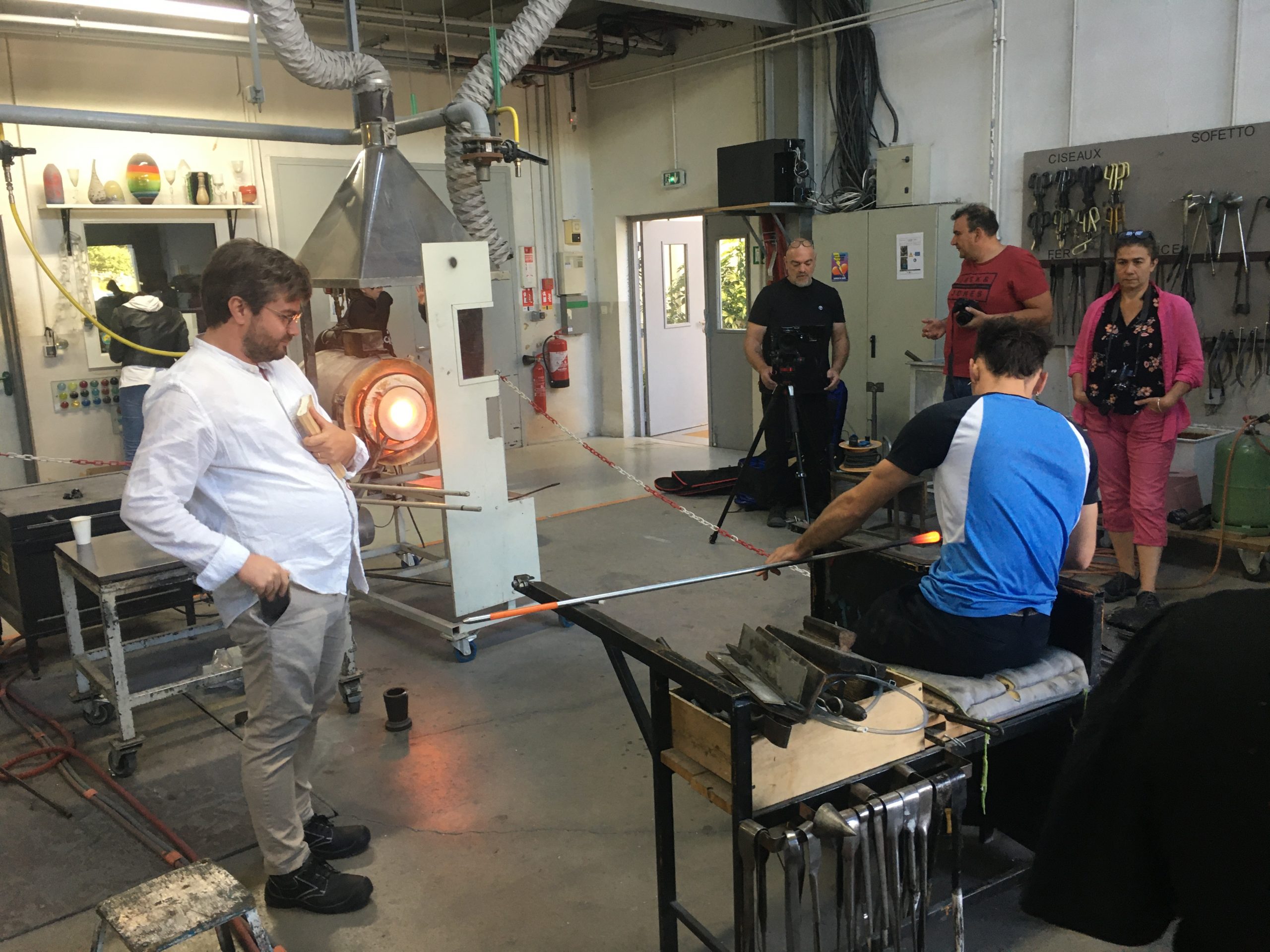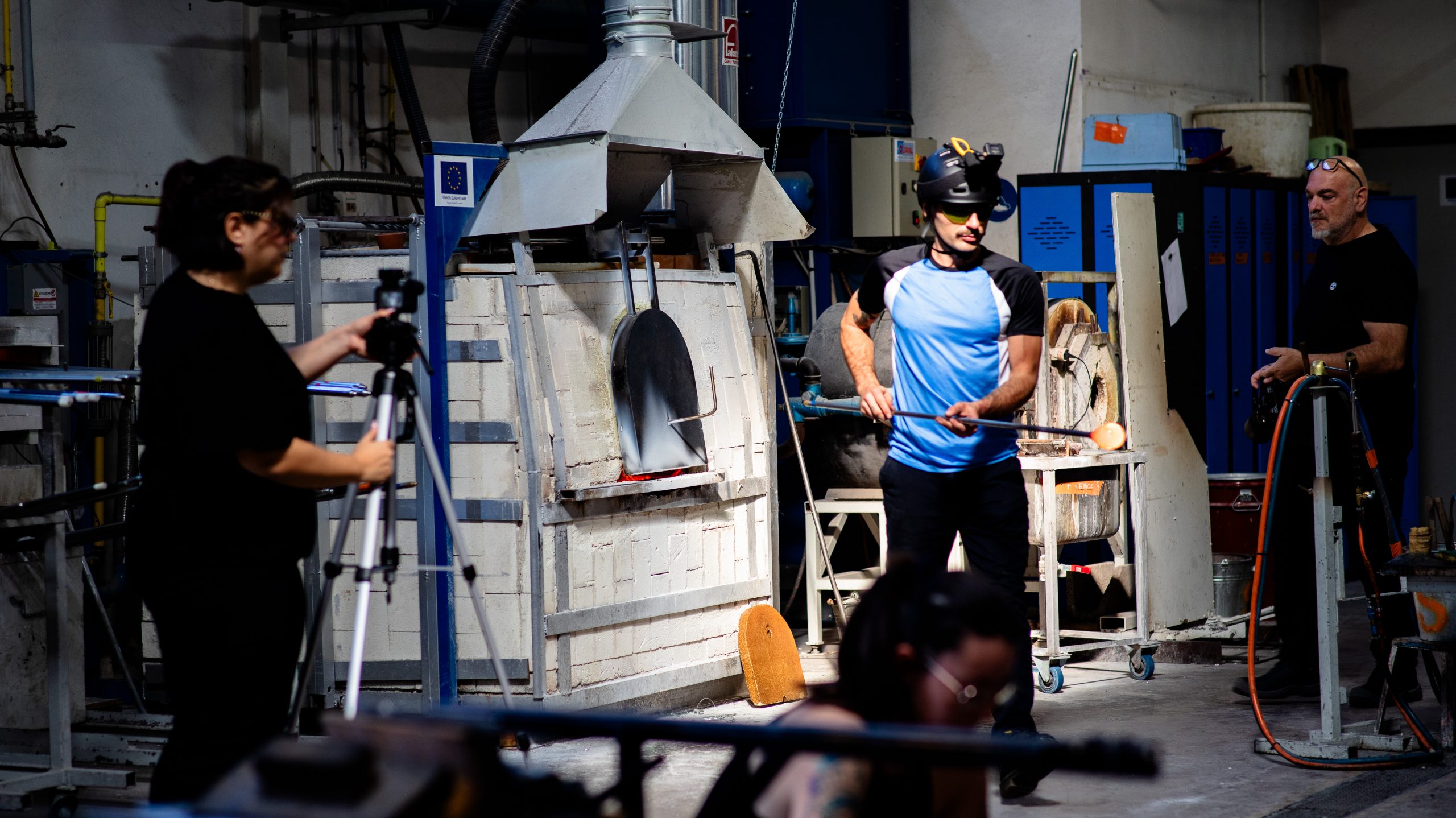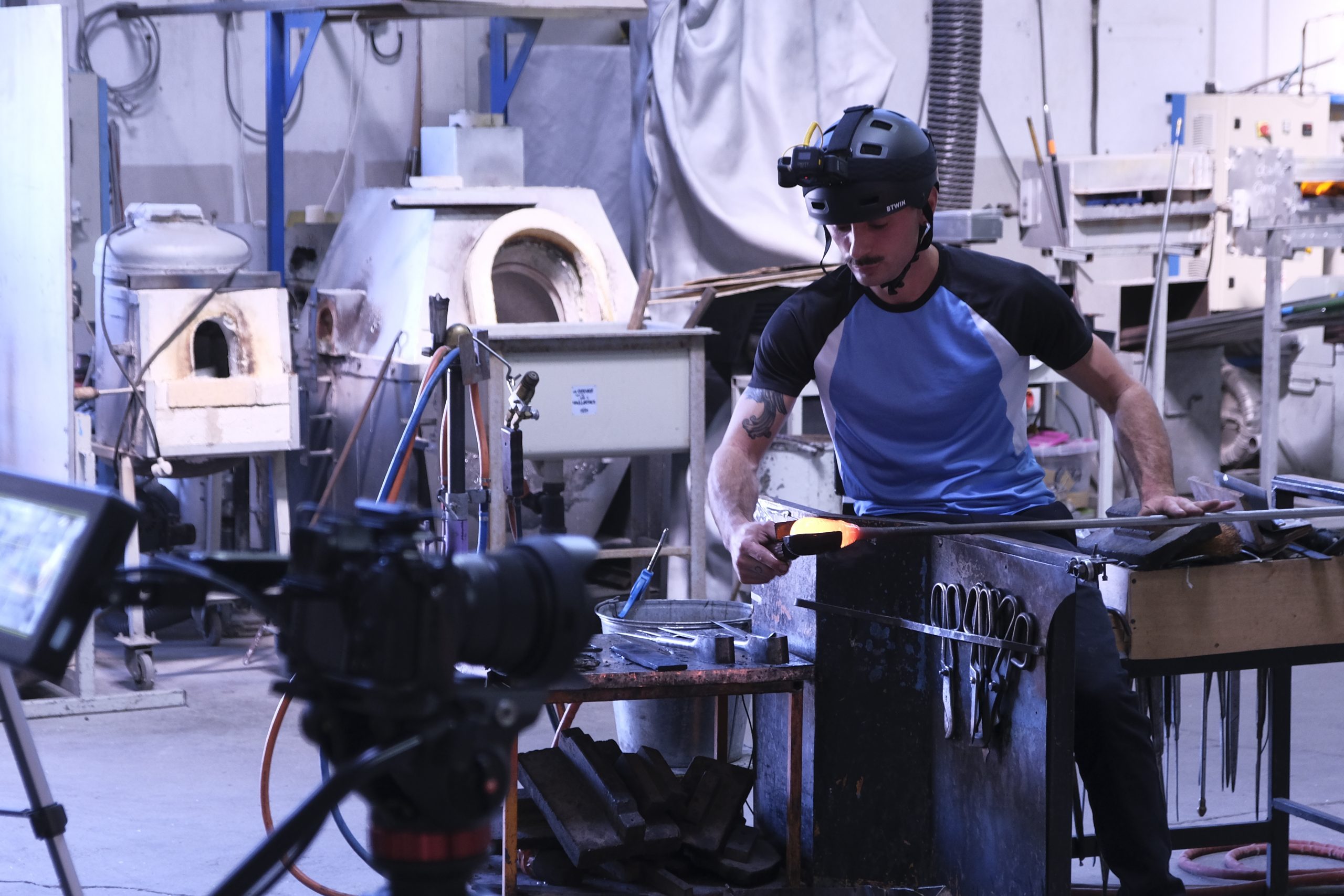Step by step
In September 2024, Craeft consortium met at Cerfav – the European Center for Research and Training in Glass Arts, nestled in the historic town of Vannes-le-Châtel, situated in Lorraine in the Grand Est region, France.
This marks the inaugural implementation of the Craeft Ethnographic Protocol, aimed at enhancing our comprehension of glass blowing with the pipe gestures, alongside improving its documentation. As explained in the Methodology section, in the Ethnographic Protocol craft practitioners play a central role in conveying insights into craft practice, workspaces, processes, materials, and traditional narratives. Therefore, the recording session started by meeting and getting to know a young trainer glassblower at Cerfav, Maxime Rosseel.
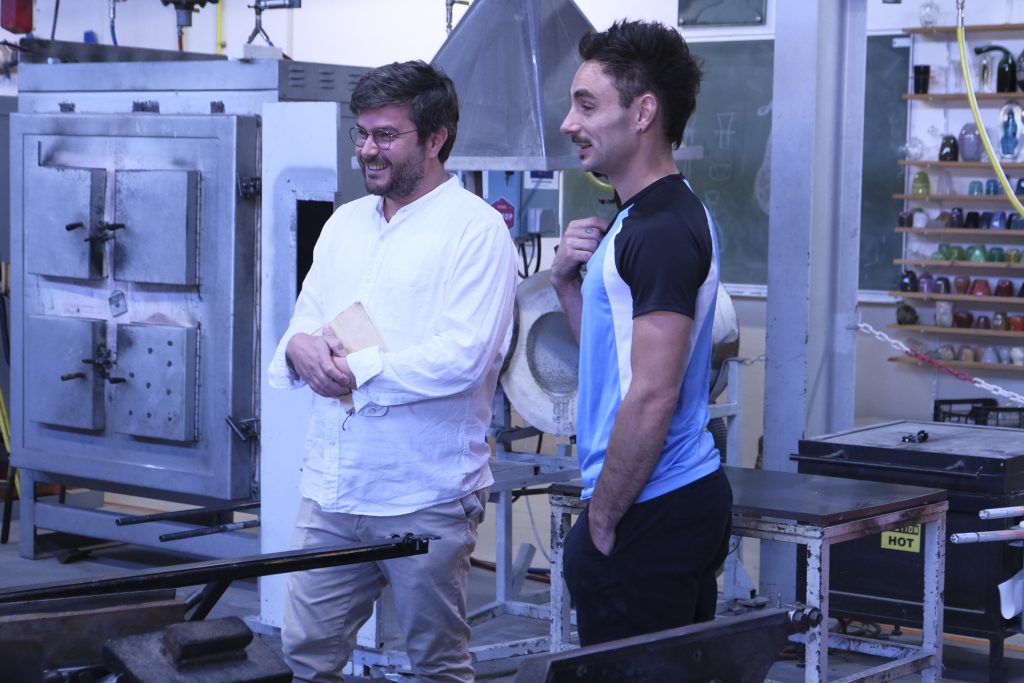
Credits: Jelena Krivokapic, MDE (2023). Arnaud Dubois (left) , an anthropologist affiliated with Cnam and Maxime Rosseel, glassblower (right) in Cerfav.
Maxime decided to concentrate on recording the manufacturing process of a mold-blown glass gobelet. This choice was not random; it stemmed from the fact that mastering this item is crucial for any aspiring glassblower aiming for professional certification. Making of this object incorporates the essential gestures that every glassblower must master. Additionally, Maxime had himself recently completed the “glass creator” training (equivalent to a +2 level) and passed his certificate of professional competence CPC at Cerfav. Following, he became the head of the public workshops in Cerfav. This firsthand, still fresh experience enabled him to elucidate the challenges and intricacies of mastering these distinctive gestures, having just undergone the training himself.
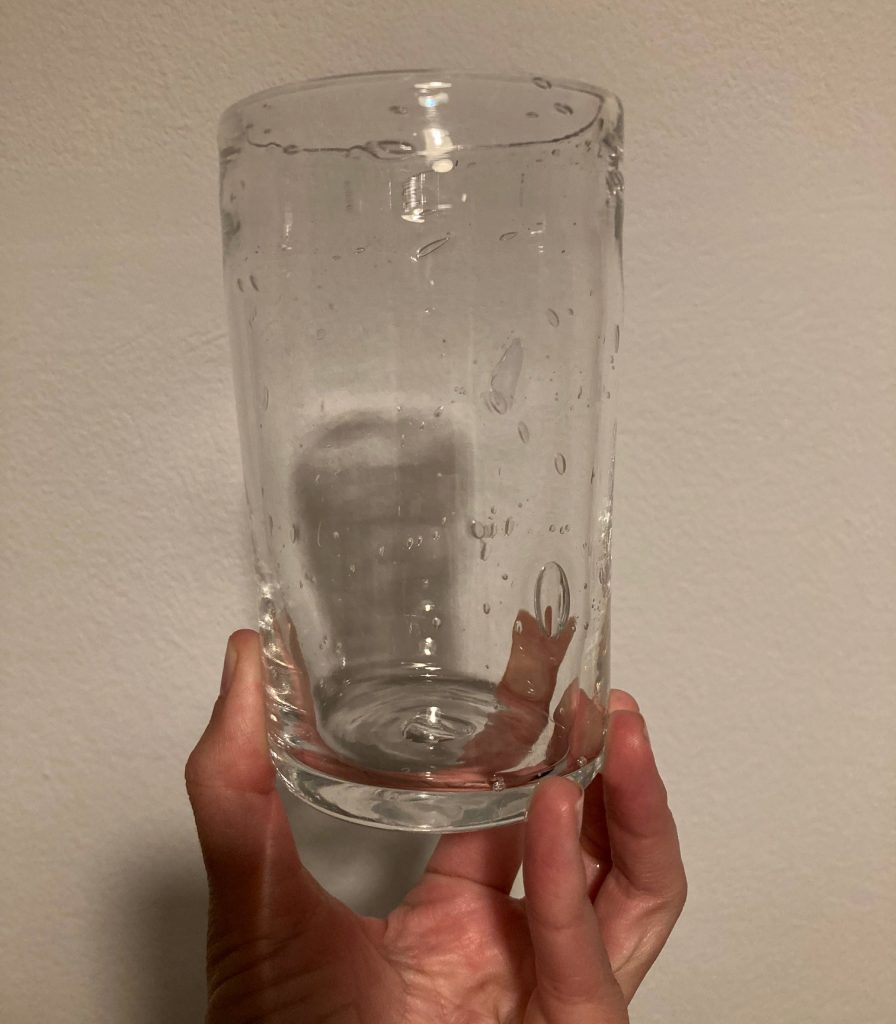
Mold-blown glass gobelet – flat-bottomed drinking glass with no handle or stem.
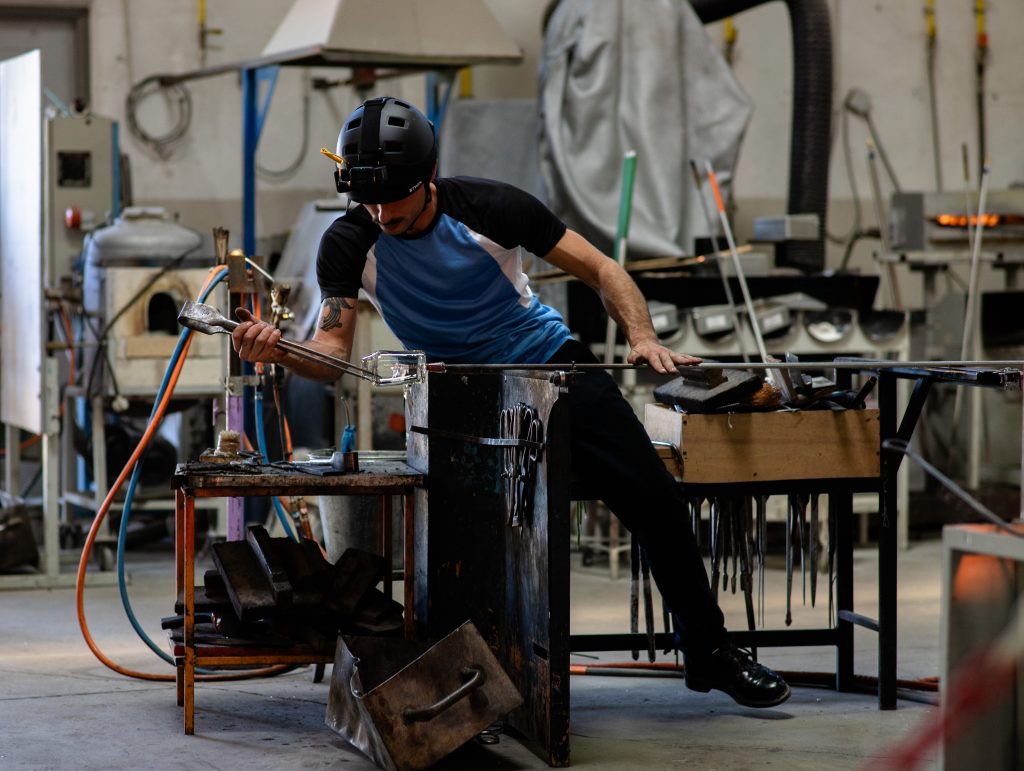
Credits: Julia Schaff , Cerfav (2023). Maxime Rosseel molding the gobelet in a mold using the “soufflé tourné” technique.
Following the selection of the making process, the recording session started. The session included recording from both first-person (egocentric) and third-person (exocentric) perspectives. The first-person perspective was made by the wearable head camera, while the third-person perspective was captured using stationary cameras positioned throughout the workshops, providing multiple angles for recording.
Credits: Gavriela Senteri , ARMINES (2023). Third-person view of Maxime Rosseel molding the gobelet in a mold using the “soufflé tourné” technique.
Credits: Gavriela Senteri , ARMINES (2023). First-person view of Maxime Rosseel molding the gobelet in a mold using the “soufflé tourné” technique.
The recording session faced a methodological challenge: the innovative “video elicitation” approach. As we captured the craftspeople’s perspectives on their work by filming from their point of view. Surprisingly, the glassblower welcomed this method, finding it enlightening. Seeing himself work from an egocentric angle gave him fresh insights into his craft. It revealed the subtle connections between his gaze, hand movements, posture, and the execution of precise techniques, validating our approach for future projects.
Following sequences show the close up of the gestures required for the process of making a glass tumbler.
Gathering the glass.
Shape in the block – Blow and cap.
Blow and rotate in the mold.
Take out of the mold.
Chill the break off line with the diamond shears.
Reheating the gobelet.
Transfer with punty.
Reheating the lip of the gobelet.
Open the lip.
Open the lip.
In addition to recording Maxime Rosseel the glass blowing with the steel pipe, while at Cerfav the Craeft team also implemented the Craeft Ethnographic Protocol to understand and document the gestures involved in lampworking. The technique was explained and recorded in the collaboration with Johanna Pierret trainer in the lampwork technique.
The videos bellow show the same gestures preformed during lampwork from two perspectives – first-person and third-person, of shaping glass with the blowtorch.
Credits: Gavriela Senteri , ARMINES (2023). First-person view of Johanna Pierret lampworking: pinch and pull with the tweezer.
Credits: Gavriela Senteri , ARMINES (2023). Third-person view of Johanna Pierret lampworking: pinch and pull with the tweezer.
Difference between glass blowing with a pipe and lampwork?
The the main difference between glass blowing with a pipe and lampwork lies in the finesse and complexity of the objects that can be made by the technique of lampworking. Lampworking glass allows for complex assemblies that are impossible to achieve in pipe glass work, and the glass (raw material) used in lampworking is different from that used for pipe blown glass objects. In fact, the lampwork allows you to work with glass that is more resistant to thermal shock.
Glass blowing with a pipe is commonly used in the creation of often functional, “bigger scale” objects as glasses, vases etc. On the other hand, lampworking gives artisans the ability to create intricate and delicate glassware, ranging from elaborate sculptures, jewelry as rings, earrings, glass beads, that are recognised by the UNESCO Representative List of the Intangible Cultural Heritage of Humanity… to exquisite glass ornaments.
To learn more about our visit to Cerfav read the Newsltter: Flashback to the Week at Cerfav, European Center for Research and Training in Glass Arts
